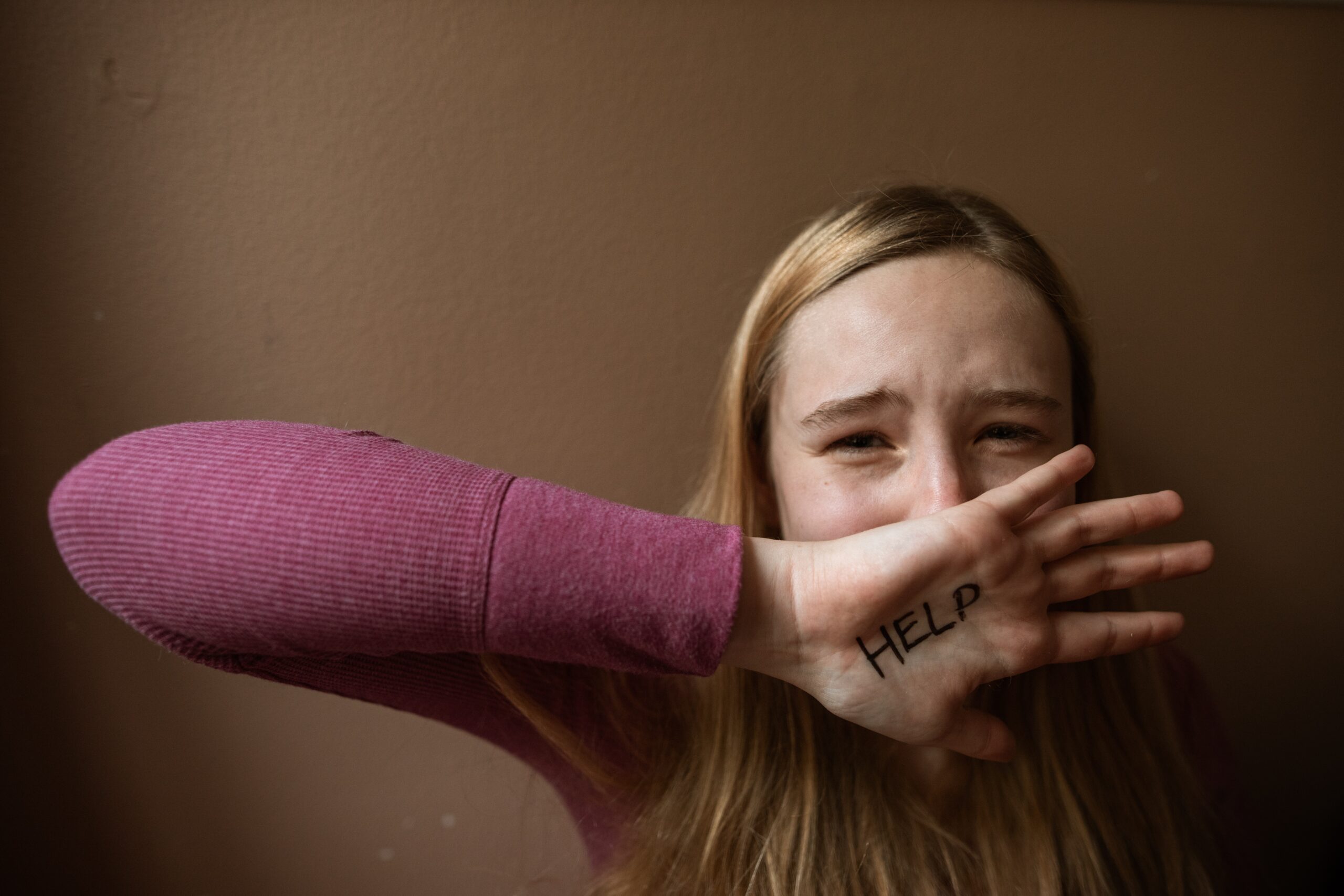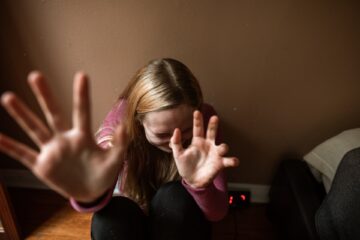![]()
Introduction:
The United Nations defines trafficking as the illegal procurement of people with the aim of exploiting them through force, coercion or fraud. This can include prostitution, organ removal, forced slavery, marriage, begging and other oppressive forms of work. Over the years, there has been a vast toll on human trafficking all over the world. Approximately 20 to 40 million people are involved in the modern slave trade with many cases going undetected, thus hiding the true figure of the crime.[1]
Women and children are moved across the borders mainly from the economically weaker or backward countries, where after they are largely forced in sexual and domestic works. They suffer in a highly ignorant environment completely robbed of their dignity and independence.
Is Human Trafficking and Prostitution Same?
Human trafficking includes sex trafficking and labour trafficking.
Prostitution is an act where a person engages sexually with a person in exchange for money. It is generally performed by vulnerable and defenceless women who have no alternate source of income. Many women induce in prostitution because of little economic opportunities available to them. Prostitution is the fastest way to make money for an uneducated woman where she is pressured to provide for her family,
Sex trafficking is involuntary. Persons are forced to perform sexual acts and slavery. On the other hand, prostitution is voluntary. However, in the case of minors, it may be seen as human trafficking. If a pimp is in control of all the money obtained by the prostitute, it constitutes sex trafficking as well.
Major Form of Trafficking
- Sexual Exploitation– This includes forced prostitution, living in brothels, sex tourism, pornography and forced marriages.
- Organ harvesting– People are kidnapped from their families and undergo organ removal without their consent. It also includes those cases where they may undergo the process with full consent, but may not be paid the promised price afterwards.
- Child soldiers– These include children below the age of 18 years who are trained for military purposes. They can be used as spies, human shields, suicide bombers and even messengers. This form of exploitation is most prevalent in Asia and Africa.
- Domestic Servitude- Children and adults are made to look after the homes of the traffickers. They may also be sexually exploited. They are paid very little and suffer from mental and physical exhaustion.
- Labour Exploitation- People are involved in laborious works in order to pay off a debt or are persuaded through some threat. Most people involved here are bonded labour. Manufacturing, fishing, construction, car washes and agriculture are some of the most industries which are most susceptible to exploitation.
Legal Stand in India
Article 23 of the Constitution prohibits forced labour and human trafficking. Practise of such acts are punishable under the law.
Section 293, 294, 340, 341, 354, 359, 363, 370, 371, 372, 373, 374, 375, 376 and 506 contains provisions for the same.
- Section 293– It prohibits the sale, hiring, distribution and exhibition of persons under 21 years of age. Punishment includes 3 years imprisonment with a fine up to 2000 rupees.
- Section 294– It prohibits the public display of any obscene act (includes singing) which may annoy others. Punishment includes imprisonment up to 3 months which may include a fine.
- Section 340 relates to wrongful confinement.
- Section 341- It mentions the punishment for wrongful restraint of a person that may extend to one month or five thousand rupees or both.
- Section 354- It prohibits the assault of a woman with the intention to outrage her. Punishment extends to 2 years, with fine, or both.
- Section 359 and 363- It defines kidnapping and lists the punishment for the same with imprisonment up to seven years with fine.
- Section 370- It punishes the people who have the knowledge of someone being trafficked with five to seven years imprisonment, with a fine.
- Section 371- It prohibits the import, export and trade of slaves with punishment as imprisonment for life.
- Section 372– Prohibits selling of a minor for prostitution with punishment as imprisonment for ten years and fine.
- Section 373– Prohibits the buying or hiring of a minor for purpose of prostitution with punishment as imprisonment of ten years with fine.
- Section 374- Prohibits the possession of labour against their will with punishment as imprisonment for one year, or fine, or both.
- Section 375 and 376 deals with provisions for rape.
- Section 506 specifies punishment for criminal intimidation.
- Article 24 of the Constitution prohibits the employment of children under 14 years of age.
Important provision under Indian Penal Code
Section 366- It makes trafficking of minor girls and women punishable with ten years imprisonment, fine, or both.
UN passed the Convention for the Suppression of the Traffic in Persons in 1949. India ratified this convention in 1950 after which it formulated the Suppression of Immoral Traffic in Women and Girls Act, 1956 (SITA). Offences under the Act included-
- Keeping women in a brothel or allowing premises to be used as a brothel (Section 3)
- Living on earnings of prostitution (Section 4)- punishment includes 7 years imprisonment that may be extended to life.
- Procuring, inducing or taking women for prostitution (Section 5)
- Detaining a person in premises where prostitution is carried on (Section 6)- punishment includes 7 to 10 years imprisonment, may be extended to life and one lakh rupees fine, or both.
- Prostitution in or in the vicinity of public places (Section 7)- punishment includes 7 to 10 years imprisonment, may be extended to life and one lakh rupees fine, or both.
- Seducing or soliciting for prostitution (Section 8)
- Seduction of a person in custody (section 9)
The Act was renamed in 1986 as the of Immoral Traffic Prevention Act, popularly known as PITA. It specifically deals with prostitution without any regards to other forms of human trafficking acts like child labour, labour exploitation etc.
Immoral Traffic (Prevention) Amendment Bill, 2006
In 2006, the Ministry of Women and Child Development proposed a new amendment to the existing act. Feature of the same are as follows-
- The earlier Act penalised the prostitute who solicited clients. The amendment proposes to depanelize the same and in turn penalise the person who visits a brothel to render the services of a prostitute.
- All offences under the bill would face a private trial i.e. on camera.
- Provision should be made to provide free education to women indulging in prostitution.
- Stringer punishments should be fixed for the pimps who forcibly push young girls and women into prostitution by rape, threats and intimidation.
- Appropriate stricter measures should be taken in order to protect the girls who are likely to indulge in prostitution as a source of income.
- A special department should be formulated in order to provide support to the NGOs who are working for the protection and welfare of the women in prostitution.
Acts related to Human Trafficking
1. Juvenile Justice (Care and Protection) of Children Act, 2015
The Act enables provisions related to the adoption of children who have suffered or are likely to suffer human trafficking. It establishes foster homes for the care and protection of such children.
2. The Bonded Labour System (Abolition) Act, 1976
The Act was formed to free all bonded labours, establish measures and organisations for their rehabilitation, cancel their debts and punish the offenders. The respective State governments are responsible for the enforcement of this Act.
3. The Transportation of Human Organ Act, 1994
The Act lists the process for organ donation and proposes provisions to prevent organ donation.
4. Goa Children’s Act, 2003
Under this Act, trafficking was given a proper definition. The definition of sexual assault included every type of sexual exploitation. It established stringent measures to control and restrict children’s access to pornography. In a hotel, the responsibility of ensuring the safety of the children was given to the owner and the manager.
Conclusion
Despite the enactment of so many provisions and legislations, the figures involved in human trafficking go up every year. Lakhs of women, men and children are trapped in this vicious cycle with no possible escape. The implementation of any Act is not as effective as it should be. The law enforcement authorities need to take up more efficient methods and solve this problem from the root cause. Otherwise, we will never escape this harsh reality of human trafficking.
References
[1] “Forced Labor, Modern Slavery, and Human Trafficking.” International Labor Organization. Accessed July 31, 2019. http://www.ilo.org/global/topics/forced-labour/lang–en/index.htm. “Monitoring Target 16.2 of the United Nations Sustainable Development Goals.” United Nations Office on Drug and Crime. Accessed July 31, 2018.



0 Comments